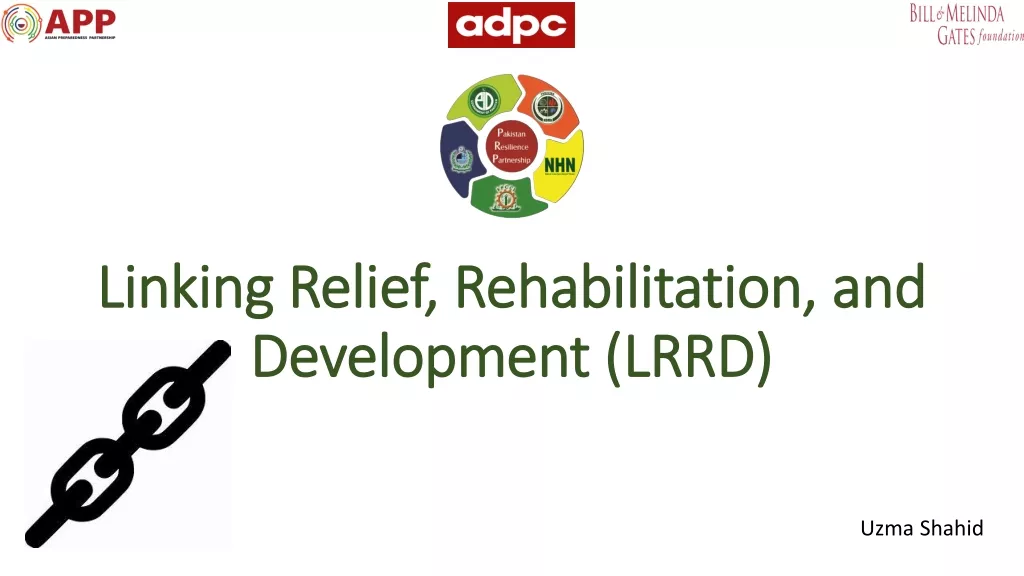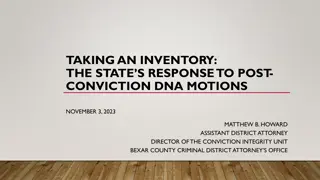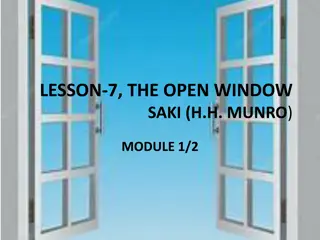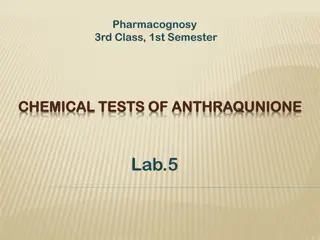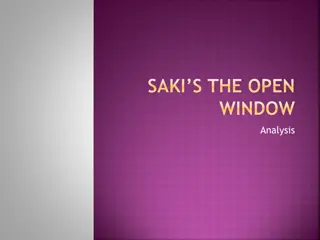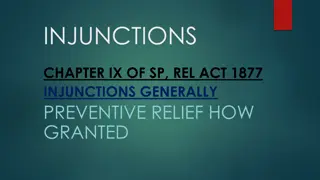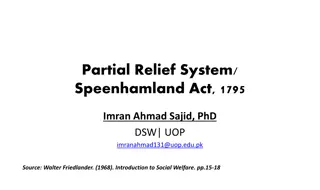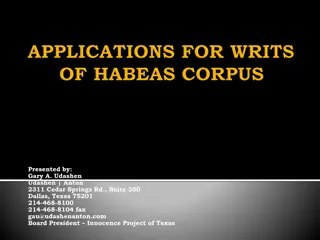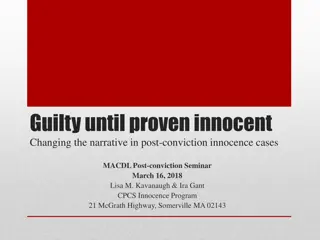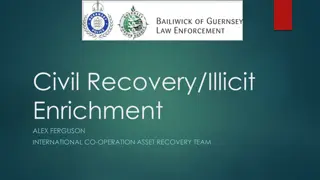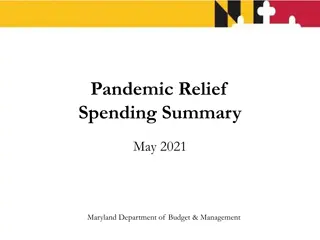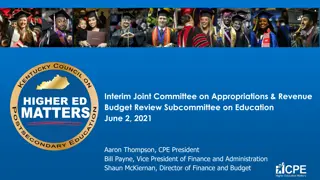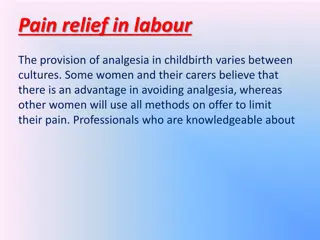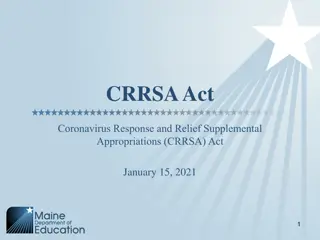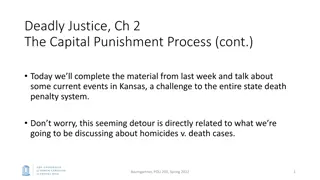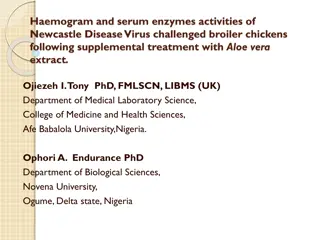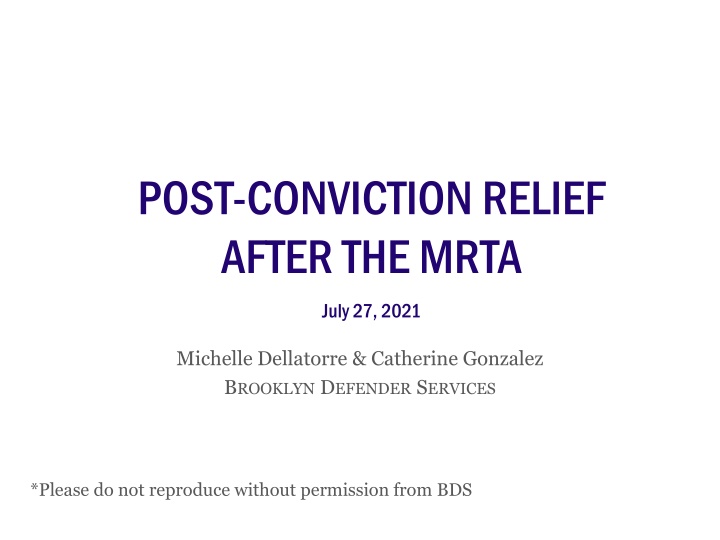
Post-Conviction Relief for Immigration Purposes
Discover the importance of seeking post-conviction relief for immigration-related convictions in New York state courts. Learn about removal of problematic convictions, the definition of convictions under immigration law, and how to navigate the process effectively.
Download Presentation

Please find below an Image/Link to download the presentation.
The content on the website is provided AS IS for your information and personal use only. It may not be sold, licensed, or shared on other websites without obtaining consent from the author. If you encounter any issues during the download, it is possible that the publisher has removed the file from their server.
You are allowed to download the files provided on this website for personal or commercial use, subject to the condition that they are used lawfully. All files are the property of their respective owners.
The content on the website is provided AS IS for your information and personal use only. It may not be sold, licensed, or shared on other websites without obtaining consent from the author.
E N D
Presentation Transcript
POST-CONVICTION RELIEF AFTER THE MRTA July 27, 2021 Michelle Dellatorre & Catherine Gonzalez BROOKLYN DEFENDER SERVICES *Please do not reproduce without permission from BDS
OVERVIEW Why Seek Post Conviction Relief (PCR)? What is a conviction for purposes of Immigration law? What is PCR? The role of immigration counsel in PCR How to meet immigration requirements for vacatur Legal Bases for PCR in NY state court New Avenues for PCR under the MRTA Nuts and Bolts of Drafting and Filing a 440 motion A Note on Clemency
Why seek Post Conviction Relief? Remove a conviction that renders someone: Deportable Inadmissible Ineligible for relief in removal Subject to mandatory detention
Why seek Post Conviction Relief? Remove or modify a problematic conviction that is particularly vulnerable to a motion under NYCPL Any A misdemeanor pre-dating 2019 Marijuana related convictions pre-dating 2019 or 2021 Prostitution related convictions that stem from status as victim of human trafficking
Why seek Post Conviction Relief? Resentence someone so that They no longer have an aggravated felony conviction Their CIMT conviction is now subject to the petty offense exception Etc.
What is a Conviction Under Immigration Law? Definition of Conviction INA 101(a)(48)(A) The term "conviction" means, with respect to an alien, a formal judgment of guilt of the alien entered by a court or, if adjudication of guilt has been withheld, where- (i) a judge or jury has found the alien guilty or the alien has entered a plea of guilty or nolo contendere or has admitted sufficient facts to warrant a finding of guilt, and (ii) the judge has ordered some form of punishment, penalty, or restraint on the alien's liberty to be imposed.
Reminder about hard to spot convictions Don t forget to screen for: RAP sheets have errors and people often don't remember the procedural details of their cases conditional pleas the upfront plea is the controlling plea for immigration purposes Convictions that seal off RAP sheets 240.20s, other violations Can be relevant for TPS, DACA, etc Marijuana convictions Many MJ convictions are disappearing from RAP sheets due to the 2019 and 2021 amendments Desk Appearance Tickets or citations that a client did not realize were a criminal
What is Post-Conviction Relief (PCR)? Appeals including NOA/LNOA Motions to Vacate judgment under NYCPL 440.10 or 440.46a Coram Nobis: for legal grounds not covered by NYCPL 440 PCR-ish working with prior defense counsel to remedy conviction E.g. modifying or removing Orders of Protection Withdrawing a plea before sentencing based on ineffective assistance of counsel Withdraw a plea post sentencing to make someone DACA eligible Clemency
Immigration Counsels Role in PCR Identify the appropriate conviction to attack via PCR Determine what type of PCR is needed Make the referral to PCR/appellate counsel for 440 Work with prior defense counsel to remedy problematic conviction Ensure filings and final order satisfy immigration law requirements for vacatur
What type of Vacatur Will Cure a Conviction Under Immigration Law? Warning: Not all vacaturs are created equal! Insufficient: Rehabilitative / Solely for Immigration Purposes A vacatur that is solely for immigration purposes or vacated based on post-conviction events, such as rehabilitation or immigration hardships is insufficient. Matter of Pickering, 23 I&N Dec. 621 (BIA 2003), Matter of Adamiak, 23 I&N Dec. 878 (BIA 2006) That means, expungements and certain coram nobis petitions may not remove a conviction under immigration law, though they may have utility for purposes of discretion or for obtaining DACA. Sufficient: Convictions that are vacated based on a "procedural or substantive defect in the underlying proceedings" are no longer considered convictions under immigration law. Matter of Pickering, 23 I&N Dec. 621 (BIA 2003)
How doI know if my client'svacatur was for "rehabilitative" or "solely for immigration"purposes? If the conviction is vacated on a ground of legal invalidity that is related to immigration consequences that does NOT mean it is solely for immigration purposes. Instead it is a sufficient legal ground. Examples of Immigration-Related Legal Grounds that count as sufficient legal grounds: Padilla issues Failure of criminal court to advise on immigration issues as required by state law 2006 (pre-Padilla case) Matter of Adamiak: the BIA held that a conviction that had been vacated under Ohio's post-conviction procedure on the ground that the trial court failed to advise the defendant of the possible immigration consequences of a guilty plea, as required by a state advisal statute, is no longer a valid conviction for immigration purposes. Defects in the plea i.e. the plea was not knowing or voluntary due to immigration consequences i.e. 440.10(j) and (k); Peque violations
What is a "Procedural or Substantive Defect"? It s a procedural or substantive defect if the vacatur statute requires vacatur on the legal merits. Matter of Rodriguez- Ruiz, 22 I&N Dec. 1378, 1379 (BIA 2000) If the vacatur is based on a violation of a fundamental statutory or constitutional right in the underlying criminal proceedings. Matter of Roldan, 22 I&N Dec. 513, 523 (BIA 1999) 440.10(1)(h) has generally been found to be a sufficient ground. In re: Richard Austin Palmer 2016 WL 394022 (BIA) (IAC); In Re: Roberto Brito A.K.A. Roberto BritoBatista 2008 WL 5025245 (BIA) (IAC)
What is for Rehabilitative Purposes or Immigration Hardships mean? Rehabilitative: deferral, vacatur, or expungement of a conviction after successful completion of probation or other conditions set by the court. Statutes that purport to restore certain rights. Definition of immigraiton hardships Requests for mercy or vacatur solely to allow for relief in removal proceedings
What about Matter of Thomas Thompson? Under Matter of Thomas and Thompson, 27 I&N Dec. 556 (AG 2019), DHS will only recognize sentence modifications when they follow the Pickering rule. Thomas Thompson does NOT raise the standard for vacatur. It merely applies the existing standard for vacatur to sentence modifications. But caution that recent NDS case, Sarobie, indicates an inclination to want to peer behind the order. Keep in mind when drafting your filings.
Burden of Proof Do you need to prove the basis of the vacatur? It depends on the burden of proof in your case. If your client is present lawfully and the government is trying to deport, the government must show that the vacatur was due to rehabilitation or immigration hardship. If your client is applying for relief, there is a Circuit split as to who has the burden of proof. DHS believes the non-citizen has the burden. See Matter of Chavez-Martinez, 24 I&N Dec. 272 (BIA 2007).
How do you show that your vacatur order satisfies the Pickeringstandard? Look to: The statute providing the basis for vacatur The terms in the vacatur order itself Any arguments provided in the criminal court filings requesting vacatur (keep this in mind when drafting your motion and supporting affidavits)
Identify the Legal Mechanism/Statute of Vacatur In general NY s 440.10(h) provision is deemed to vacate a conviction based on a legal defect. Rodriguez Ruiz specifically deals with conviction vacated under 440.10(1)(h) and found that 440.10(1)(h) vacates convictions due to a legal defect. However, note the negative BIA decision on Sarobie (in materials), making nonsensical and negative inferences when pleadings were not filed The new subsections of 440.10(1)(j) and (k) and 440.46-a are currently untested, so stay tuned!
What Should Your Order Look Like? To Submit Pleadings or to Not Submit Pleadings in Immigration Court? Federal statute requires federal courts to accord full faith and credit to state court judgments. 28 U.S.C. 1738 (1994). Rodriguez-Ruiz affirmed this. But then in Thomas Thompson, Barr decided that immigration courts are not federal courts and so are not bound by the full faith and credit statute. Nevertheless, this is worth arguing or at least arguing when the vacatur order is clear on its face Pinho v. Gonzalez, 432F.3d 193 (3rdCir. Dec. 20, 2005): To determine the basis for a vacatur order, the agency must first look to the order itself. If the order explains the court s reasons for vacating the conviction, the agency s inquiry must end there. If the order does not give a clear statement of reasons, the agency may look to the record before the court when the order was entered. No other evidence of reasons may be considered. Therefore, the order alone should be sufficient proof of the vacatur and proof that the conviction was vacated to correct a legal defect. Pickering states that an order is ineffectiveonlyif it was entered solely for immigration purposes . However, IJs will often insist on seeing the filings so be prepared to submit them Thus, if the motion or petition and the court order vacating the conviction give any other reason or ground for vacating the conviction aside from the immigration consequences then the order must be respected. This means that it should be OK to mention immigration consequences in your filings, so long as the motion to vacate is granted on legal defect grounds.
Orders Best Practices Continued Short, Sweet, and Statute-Heavy 440.10(1)(j) and (k) should be sufficient legal grounds, however because 440.10(1)(h) has been so consistently recognized as legally sufficient, if possible, also cite to this subsection. If not, include language that describes the legal defect in the underlying proceeding Alternatively, cite to 440.10(1) in general Avoid discussion of immigration in the order Avoid orders saying that the order was issued on consent from the DA's office
Caution! Vacatur is not a Panacea Commits or admits committing under 8 USC 1182(a)(2)(A) [R]eason to believe a drug trafficker under 8 USC 1182(a)(2)(C) or any other conduct-based ground Inadmissibility at time of entry or adjustm ent if conviction was undisclosed 8 USC 1227(a)(1)(A) Potential negative factor for discretion
Legal Bases for PCR in NY State Appeals and Late Notice of Appeals Coram Nobis (common law doctrine) PCR-ish NYCPL 440.10(1)(h) NYCPL 440.10(1)(i) NYCPL 440.10(1)(j) (created in 2019-One Day to Protect New Yorkers; applies to A misdemeanors and arguably B misdemeanors) NYCPL 440.10(1)(k) (created in 2019- MJ Decim-and modified in 2021 by MRTA; applies to certain MJ convictions) NYCPL 440.20 (motion to set aside sentence) NYCPL 440.46 (motions to resentence) NYCPL 440.46-a (created in 2021 by MRTA; applies to certain MJ convictions)
Direct appeals (NOA/LNOA) Every defendant in New York State has an absolute and fundamental right to appellate review. People v. Montgomery, 24 N.Y.2d 130, 131, 132 (1969); see also People v. Harrison, 85 N.Y.2d 794, 796 (1995)(same). Defendants in New York may appeal their criminal convictions to the Appellate Division as of right. C.P.L. 450.10. The right to appeal does not depend upon the existence of meritorious points [and] an appellate court may not insist upon an indigent defendant showing substantial merit before entertaining his appeal. People v. Borum, 8 N.Y.2d 177, 178-79 (1960). Direct Appeal = 30 days from sentence There is NO requirement that the notice of appeal identify the issues to be raised. See C.P.L. 460.10 Waiver of appeal rights as part of plea any constitutional or jurisdictional defects survive the waiver People v. Lopez, 6 N.Y.3d 248, 257 (2006) Obligations of criminal defense attorney Must consult with client about filing an appeal "when there is reason to think either (1) that a rational defendant would want to appeal. . ., or (2) that this particular defendant reasonable demonstrated to counsel that he was interested in appealing." Roe v. Flores-Ortega, 328 U.S. 470, 480 (2000) MUST give defendant written notice advising of right to appeal. 22 N.Y.C.R.R. 671.3(a)
Direct appeals (NOA/LNOA) (cont'd) Notice of Appeal filed within 30 days of sentence. N.Y. Crim. Proc. Law 460.10(1)(a Motion for Late Notice of Appeal - C.P.L. 460.30(1) provides a one- year enlargement of time in which to file a notice of appeal when the failure to do so within the 30-day period was due to the improper conduct of a public servant or improper conduct, death or disability of the defendant's attorney, or the inability of the defendant and his attorney to . . . communicate[], in person or by mail, concerning whether an appeal should be taken concerning whether an appeal should be taken, prior to the expiration of the time within which to take an appeal due to defendant's incarceration in an institution and through no lack of due diligence or fault of the attorney or defendant. Once accepted, LNOA = case on direct appeal - "A motion to file a late notice of appeal amounts to nothing more than an extension of time for taking an appeal. People v. Corso, 40 N.Y.2d 578, 580 (1976); People v. Syville, 15 N.Y.3d 391, 399 (2010)
Brathwaite and Finality of Conviction A conviction that is on appeal is generally not considered final, but a 440 motion is not an appeal. Pre-1996 and IIRIRA, the conviction finality requirement was firmly settled by BIA and Fed Courts. The traditional rule, was that a conviction must be sufficiently final" before it may sustain an order of removal See Pino. v. Landon, 349 U.S. 901 (1955). This usually meant that a conviction was not final until direct appellate review was exhausted or waived. In 1996, IIRIRA created a statutory definition of a conviction. Things got a little confused. Matter of J.M. Acosta issued by the BIA in 2018 held that traditional conviction finality requirement with respect to formal judgments of guilt survives IIRIRA, but also found that there is a rebuttable presumption that a conviction is final for immigration purposes if DHS establishes that the time for a direct appeal of the conviction has passed. In Acosta the BIA also noted that appeals and collateral attacks that are not related to the merits of the conviction do not eliminate the finality of a conviction for immigration purposes. This was an unworkable rule. On July 1, 2021, the 2nd Circuit issued a decision in Brathwaite v. Garland (PLS case!) that found that Acosta's "presumption of finality" to criminal convictions that were on appeal was arbitrary and capricious! Now a conviction on appeal is again not final.
Finality of Convictions, cont'd Your Client is in Removal Proceedings and has a deportable conviction that is 440 eligible. There is no appeal filed. The time for filing a late NOA has passed. You file a 440. Is the Conviction Final? Probably, yes. Still an undecided question in the 2nd Circuit However, other circuit courts outside the 2nd Circuit have found that seeking post-conviction relief does not prevent a conviction from being considered final. Paredes v. Attorney General of U.S., 528 F.3d 196 (3d Cir. Jun. 9, 2008); Jimenez-Guzman v. Holder, 642 F.3d 1294, 2011 WL 2547562 (10th Cir. Jun. 28, 2011) Your LPR client is in removal proceedings. They just filed a LNOA on their removable conviction. What now? Move to terminate proceedings based on Brathwaite! Consider if Admin Closure is an option for other clients
Coram Nobis (common law doctrine) Common law doctrine: writ of error A motion for coram nobis is of the same general character as a motion to vacate Constitutional v. statutory basis Still alive! Use for claims that are not covered by the specifically delineated grounds in CPL 440 (i.e. newly discovered evidence) Can also use when a Notice of Appeal was not filed (see concurrence in People v. Tiger, 32 N.Y.3d 91 (2018)) No time limit for filing a writ of error coram nobis under New York law (Smith v. Duncan, 411 F.3d 340 (2d Cir. 2005))
PCR-ish Re-calendar case in order to: Modify Order of Protection Example: WH only client before IJ Mulligan, one DV related conviction involving client s son s mother. Permanent Order of Protection in place. Contacted LAS in Nassau asked them to work on modification of order of protection Why? Mitigate conviction LAS submitted a letter documenting that c/w never wanted to cooperate, didn t want charges and is now working with them to modify OOP Helped to show that client will be reunited with family, place to live, etc. Consider using new MRTA provisions in PD requests. Argue that automatic vacatur under the MJ expungement provisions is sufficient for termination, administrative closure, etc. Re-calendar criminal case and withdraw plea post sentencing in order to achieve an expungement of a conviction which is sufficient for DACA purposes
C.P.L. 440.10- Motion to Vacate Judgment In 2019, Governor Cuomo, signed a series of bills that extend relief to noncitizens facing harsh immigration consequences as a result of certain criminal convictions Added two vacatur provisions to 440.10. Those provisions are 440.10(1)(j) (effective April 12, 2019) and 440.10(1)(k) (effective August 28, 2019) In 2021 the Marijuana Reform and Taxation Act expanded the list of convictions eligible for vacatur under 440.10(1)(k) and created 440.46-a, which provides for resentencing and vacatur of certain marijuana convictions (effective date March 31, 2021) For our purposes, we will address 5 provisions: NYCPL 440.10(1)(h), 440.10(1)(i), 440.10(1)(j), 440.10(1)(k), and 440.46-a
440.10(1)(h) Ground for vacatur under (h): the judgment was obtained in violation of a right of the defendant under the constitution of this state or of the United States Remedy: court can vacate the judgment, and must dismiss the accusatory instrument, or order a new trial, or take such other action as is appropriate in the circumstance. 440.10(4)
440.10(1)(h) grounds (not exclusive) Typical 440.10(1)(h) grounds (not exclusive): The ineffective assistance of counsel claim ( IAC ) 6th amendment claims Deficient performance Failure to advise Not only applies to post-Padilla! Failure to negotiate Misadvise Failure to investigate Failure to prepare Failure to convey offer
440.10(1)(h) grounds cont. The Due process claim 5th amendment claims Involuntary or unknowing plea Failure to advise Note: the constitutional violation grounds created in 440.10(1)(j) and (k), if applicable, are DP claims (more on that later) that can be raised in (1)(h) by virtue of a cross- reference to the applicable subsection Very fact and circumstance specific 440.10(h) claims depend heavily on caselaw that is constantly evolving The standard depends on the date of conviction and the law at the time
440.10(1)(i) grounds Ground for vacatur under (1)(i): the judgment is a conviction where the arresting charge was under section: 240.37 (loitering for the purpose of engaging in a prostitution offense, provided that the defendant was not alleged to be loitering for the purpose of patronizing a person for position or promoting) 230.00 (prostitution) 230.03 (prostitution in a school zone) AND defendant s participation was result of having been a victim of sex trafficking under 230.34, 230.34-a, 135.35, 135.37, 230.33, or USC title 22, chapter 78
440.10(1)(i) cont. Presumption: There is a presumption that the defendant s participation of offense was a result of having been a victim of sex trafficking if there is an official documentation of the defendant s status as a victim of trafficking, etc., at the time of the offense from a federal, state or local government agency. 440.10(1)(i)(ii) NOTE: This official document is not required for motion to be granted under this section, it just triggers the presumption Time limit of motion: Motion must be made with due diligence after defendant has ceased to be a victim of such trafficking or compelling prostitution crime or has sought services for victims of such trafficking, etc...subject to reasonable concerns for the safety of the defendant, family members...etc. 440.10(1)(i)(i) Remedy: vacate and dismiss (and may take such additional action as is appropriate in the circumstance). 440.10(6)
440.10(1)(j) grounds Ground for vacatur under (1)(j): Convictions of a class A or unclassified misdemeanor entered prior to 4/12/2019 of this paragraph and satisfies the ground prescribed in paragraph (h) Note: there is no mention of class B misdemeanors in this provision. However, a recent Queens Criminal Court decision held that the omission of B misdemeanor sale of marijuana offenses is nonsensical and found this provision must have intended to include B misdemeanor sale of marijuana convictions. People v. Perez, 2020 NY Slip Op. 20197 (August 11, 2020). This provision creates a rebuttable presumption that a conviction by plea to such offense was not knowing, voluntary, and intelligent if there are ongoing collateral consequences, including potential or actual immigration consequences Therefore, may satisfy the ground prescribed in (h), showing a violation of a constitutional right The presumption is rebuttable, meaning the Court can find despite the consequences that trigger the presumption of a constitutional violation, the plea was actually knowing, voluntary, and intelligent How? Minutes, testimony (prior attorney or... client), court file, prior immigration experience (yikes)?, etc.
440.10(1)(j) cont. What about guilt after trial? If convicted by verdict, rebuttable presumption that verdict constitutes cruel and unusual punishment under state constitution Remedy 440.10(9) specifically addresses motions under (j): (a) with consent of the people, vacate the judgment or modify the judgment by reducing it to one of conviction for a lesser offense or vacate or (b) vacate the judgment and order a new trial wherein the defendant enters a plea to the same offense in order to permit the court to resentence the defendant in accordance with the amendatory provisions of subdivision one-a of section 70.15 of the penal law But, in an unpublished decision in Kings Criminal Court, Judge Yavinsky ruled that the remedies under 440.10(4) are available to motions granted under (j). People v. Percival Boodoosingh, Docket 2014KN067329 (2019)
Matter of Velasquez Rios and 364-day Sentences on A Misdemeanors In 2018 the BIA held that that it will not give retroactive effect to California Penal Code 18.5(a) on convictions from before January 1, 2015. It will consider a California misdemeanor conviction from before January 1, 2015 to have a potential sentence of up to one year, while a misdemeanor conviction on or after that date will have a potential sentence of up to 364 days. On April 12, 2019, the One Day to Protect New Yorkers legislation reduced the sentence on A misdemeanors to 364 days both prospectively and retroactively Anecdotally we know that some IJ's consider Matter of Velasquez- Rios to apply to One Day For New Yorkers and so refuse to credit the retroactive change in possible maximum sentence. Best practice is to file a motion under NYCPL 440.10(1)(j) to seek vacatur/re-plea/resentencing on the A misdemeanor.
Marijuana Regulation and Taxation Act (MRTA) Effective date: March 31, 2021 Creates a legal cannabis industry in NYS Recreational adult use allowed Legal to possess up to 3 oz/24 grams New Avenues for PCR/Advocacy Automatic expungement Expanded vacatur provision (440.10(j)) New resentencing provision (440.46-a) Sealing v. Vacatur v. Expungement Penal Code Redesignations Changes to Criminal Penalties BUT remains a Schedule I Controlled Substance under federal law
RECLASSIFICATIONOF OFFENSES: POSSESSION Possession of Possession of PL 221 [REPEALED] PL 221 [REPEALED] PL 222 [NEW] PL 222 [NEW] Underage (under 21) 221.05, Violation MRTA 132(4), Civil Infraction In public view and burning 221.05, Violation 222.10(1), If in prohibited location, Civil Infraction > 1oz 221.10, Violation Legal up to 3 oz > 2 oz 221.15, Class A Misdemeanor Legal up to 3 oz 3 oz 221.15, Class A Misdemeanor 222.25, Violation > 8 oz 221.20, Class E Felony 222.25, Violation > 16 oz 221.25, Class D Felony 222.30, Class A Misdemeanor > 5 lbs 221.25, Class D Felony Legal u pto 5lbs in home (not yet in effect) Outside home: 222.25Class E Felony > 10 lbs 221.30, Class C Felony 222.40, Class D Felony
RECLASSIFICATIONOF OFFENSES: SALE PL 221 [REPEALED] PL 221 [REPEALED] Sale (any amount) 221.35, Class B Misdemeanor Sale of Sale of PL 222 [NEW] PL 222 [NEW] If unlicensed, Violation > 2 g 221.40, Class A Misdemeanor Violation > 25 g 221.45, Class E Felony Violation Underage buyer (under 18) 221.50, Class D Felony Class A misdemeanor (defense if 3-year age difference between buyer and seller) 222.50(2), if seller over 21 221.35, Class B Misdemeanor Underage buyer (under 21) Class A misdemeanor (defense if 3-year age difference between buyer and seller) Class A Misdemeanor Class A Misdemeanor Class E Felony Class E Felony 3 oz > 4 oz > 16 oz Underage buyer (under 18) if 3 oz > 5 lbs > 100 lbs 221.45, Class E Felony 221.50, Class D Felony 221.55, Class C Felony 222.55(2), Any amount Class D Felony 221.55, Class C Felony 221.55, Class C Felony 222.60, Class D Felony 222.65, Class C Felony
440.10(1)(k) grounds Ground for (MJ) vacatur under (1)(k): Convictions before 03/31/2021 for: 240.36 (loitering for purpose of using MJ) 240.37 (loitering for the purpose of engaging in a prostitution offense) 221.05 (unlawful possession of MJ, 2nd degree/ unlawful possession of MJ prior to 2019) 221.10 (unlawful possession of MJ, 1st degree /criminal possession of MJ, 5th degree prior to 2019) 221.15 (Crim possession of MJ, 4th degree) 221.20 (Crim possession of MJ, 3rd degree) 221.35 (Crim sale of MJ, 5th degree) 221.40 (Crim sale of MJ, 4th degree) certain offenses entered before 7/27/1977 under NYPL 220 that involve only marijuana Creates a rebuttable presumption that a conviction by plea was not knowing, voluntary and intelligent if it has severe or ongoing consequences, including but not limited to potential or actual immigration consequences What about guilt after trial? If convicted by verdict, rebuttable presumption that verdict constitutes cruel and unusual punishment under states constitution Remedy: vacate and dismiss and may take such additional action as is appropriate. 440.10(6)
Expungement New York definition of expungement Newly Created in 2019 (Marijuana Decriminalization Bill) Expanded in 2021 (MRTA) Automatic For certain offenses All convictions for possession up to 16 ounces All convictions for sale up to 25 grams Certain new convictions under PL 222 Deadline: March 2023 Mass, automatic expungement may not be recognized as sufficient under federal immigration law
Sealing Since 1976 Expungement Since 2019, expanded in 2021 Vacatur Since 1970, most recently expanded in 2019 and 2021 By motion under NYCPL 440.10 and NYCPL 440.46 Automatic for designated dispositions under NYCPL 160.50 (and by motion under NYCPL 160.59 for certain offenses) Available when a case is resolved in favor of the accused (dismissal, ACD, MACD, violation, acquittal) Records still exist Automatic for designated dispositions under NYCPL 160.50(3)(k) Only available for certain marijuana offenses Available for any offense but must show proof of applicable statutory/constitutional ground If motion results in dismissal, sealing laws apply If motion results in dismissal, sealing laws apply Becomes a legal nullity and record is erased Records only available to person Marked as expunged or can request destruction [we advise against it] Records available to person/authorized party, OCA, DCJS, police, probation, parole, district attorney, certain employers, and law enforcement agencies, but placed under seal and hidden from public Booking photos, palmprints and fingerprints, DNA records are destroyed Booking photos, palmprints and fingerprints, DNA records are destroyed No criminal record under state law; does not appear on background check Do not have to disclose arrest under state law May count as conviction under federal immigration law If motion results in dismissal, sealing laws apply No criminal record under state law; does appear on a background check If motion results in dismissal, no criminal record under state law; does not appear on a background check May have to disclose arrest under state law May have to disclose arrest under state law May count as conviction under federal immigration law Best way to avoid conviction under federal immigration law but depending on basis some may be insufficient under federal immigration law Must disclose on immigration applications Must disclose on immigration applications Must disclose on immigration applications **ICE can see record and act on it** **ICE can see record and act on it** **ICE can see record and act on it**
Resentencing 440.46-a Resentencing for offenses not automatically expungable Motion to vacate the old conviction and substitute it with a conviction for an appropriate lesser offense under NYPL 222. Statutory language seems to allow for complete vacatur in the interests of justice. For a person currently serving a sentence on a conviction under NYPL 221 for conduct that is not a crime under NYPL 222 then the vacatur is supposed to be automatic and NOT require a motion, though the option to file a motion remains. CPL 440.46-a(1) Deadline: March 31, 2023: to identify and notify all relevant entities for people currently serving sentences. 440.46-a(4)(g)
440.46-a grounds Application process for resentencing to seek reduced sentence Also option to complete vacatur under this provision Covers: Sale conviction in which there was no compensation (vacatur or resentencing) Prior felony conviction that is now a misdemeanor (resentencing) Some charges were expunged but others still stand (resentencing) Standard/BOP: conviction or sentence has severe or ongoing consequences Pending amendment See Matter of Thomas & Thompson, 27 I&N Dec. 674 (A.G. 2019) State court orders modifying, clarifying, or altering a sentence will be given effect for immigration purposes only if based on a procedural or substantive defect in the underlying criminal proceeding New OCA procedure (materials): Cannabis (Marihuana) and Expungement Under New York State Law FORM: Marihuana Resentencing Application [CPL 440.46-a]
Procedure for filing a motion under NYCPL 440 Step 1 Step 2 Step 3 Step 4 Identify removable conviction Obtain all documents related to convictoin Meet with client Develop strategery Referral & preparation/drafting of 440 motion Reach out to DA for consent/negotiations File with court Have hearing or court appearance
440 Procedure Step 1 Step 1 Is there a 440 issue? Identify/Confirm the conviction(s) - deportable/inadmissible Request full court file plus plea and sentencing minutes to confirm subsection of plea and whether there was a conditional plea Do this ASAP!! *Remember does not have to be a Padilla or Peque issue...
440 Procedure Step 1 (continued) Step 1 Is there a 440 issue? Interview client Interview re: atty advice and advocacy, severe and ongoing consequences, equities, etc. Key advice/lack of advice re: immigration consequences Look out for cases resolved at arraignments with no investigation Conference these issues Sign releases
440 Procedure Step 1 (continued) Strategy Why do you want to do the 440? MTT Relief eligibility? Bond? Be cognizant of the timing can take over a year is a letter re 440 enough to get you to bond? Speak to client again to warn of the consequences of winning a 440 the charging document is restored; client could face a worse conviction or sentence outcome
440 Procedure Step 2 Referrals CAUTION: In NYS, attorneys do NOT get paid for a 440, unless a hearing is granted -->very difficult to find counsel outside of NYC 5 Boroughs --> Refer to Immigrant Defense Project - https://www.immigrantdefenseproject.org/what-we- do/legal-advice/pcr-referral-form/ Outside of NYC - Westchester LAS & Suffolk LAS - generally will help w/440s & LNOA RIACs can help connect you with 440 attys, or in some cases may take on rep themselves, but again, difficult discuss ability to pay low bono Caution same issue applies with LNOAs difficult to find attorneys to handle these
440 Procedure Step 2 Prep/Drafting Review and utilize client info/minutes/court file to prep motion Note At this point, you may want to reach out to the DA (depends on jurisdiction) What does the 440 Motion contain? Notice of motion Counsel's affirmation (PCR counsel) Client affidavit Other parties' affidavits (if applicable) Can include family members of client For IAC claims under (h), can include affirmation from trial counsel on failure to advise Memorandum of Law Exhibits Complaint/indictment and certificate of disposition Plea minutes Suggested Order

